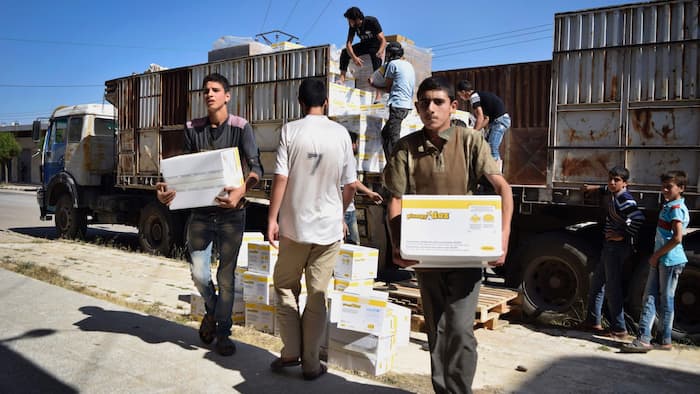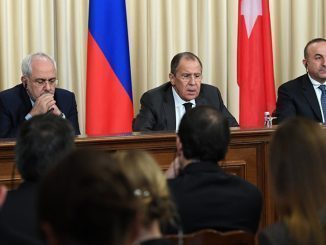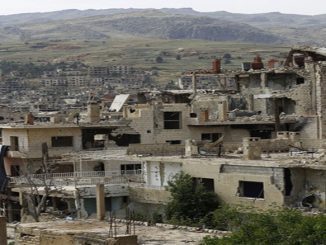
The US administration has been secretly considering sending more firepower to CIA-backed rebels fighting Assad regime forces, including weapons that can be used against Russian aircraft and artillery, according to a media report.
Russia launched an air campaign on September 30 last year in support of Syrian government forces, in a military intervention that has been widely credited with helping turn the balance of power in favor of Bashar al-Assad.
Since then, at least 9,364 people have been killed in Russian raids, according to the Britain-based Syrian Observatory for Human Rights.
Citing US officials, who preferred to remain anonymous, the Washington Post reported the existence of a so-called ‘Plan B,’ which in case of “failed diplomatic efforts” provided for arming US-backed Syrian rebels with truck-mounted anti-aircraft weapons that could help rebel units “defend themselves against Russian aircraft and artillery.”
It says the plan was raised several times over the course of recent weekly White House meetings and was submitted to President Barack Obama during a National Security Council meeting on October 14.
The newspaper states, however, that ‘Plan B’ was “neither approved nor rejected,” with Obama reluctant to make any decision on the matter.
New arms supplies to the moderate opposition could lead to the deaths of Russian military personnel who have been aiding the Syrian Army, and this could in turn cause a direct confrontation with Moscow, which Obama has been trying to avoid.
While the plan reportedly had supporters in the form of CIA Director John Brennan and Defense Secretary Ashton Carter, many were skeptical, including Secretary of State John Kerry.
White House sources also told the newspaper that the decision not to expand arms deliveries to Syrian rebels “reflects a growing skepticism”within the American administration regarding the expansion of a“covert CIA program,” through which it has been training and arming Syrian ‘moderate opposition’ over the past three years. This, in their words, has been the central element of the US strategy to put pressure on Syrian President Bashar Assad and force his resignation.
Washington and Moscow have opposing views on Assad, and this has been one of the main stumbling blocks stalling their peace efforts as chairs of the ISSG (the International Syria Support Group). But according to US officials, many now doubt that “even an expanded version” of the CIA’s plan could help the US oust Assad as long as he is backed by Moscow.
“It’s a fine mess we’ve gotten ourselves into,” a former senior administration official who was involved in the Syria program early on is cited as saying. “There’s a huge risk here since the Russians entered […] The lesson out of this is that if you don’t take action early on, you should almost expect the options to get worse and worse and worse.”
He added that under current circumstances, the US president has“understandable reason for caution” in steps regarding the Syrian crisis, but noted that “the lack of a decision is a decision” in itself.
“The Russians have seized the initiative,” another senior administration official is cited by the newspaper as saying. “You can’t pretend you can go to war against Assad and not go to war against Russia.”
Molham Ekaidi, deputy commander of an FSA unit in Aleppo, said in an online interview that the United States’ failure to deliver advanced antiaircraft weapons to aid in the defense of Aleppo amounted to a “green light” for Moscow to lay waste to the city.
U.S. intelligence officials say that the rebels have proved to be effective street fighters but that they aren’t sure how long they will be able to hold out given the extensive damage inflicted from the air. Ekaidi said street fighting would favor the rebel side.
“They won’t be able to solve Aleppo by military means,” Ekaidi said. “The regime is weak when it comes to street warfare. The air bombardment won’t be effective enough.”
Last week, Damascus and Moscow stopped carrying out airstrikes in eastern Aleppo and opened a number of humanitarian corridors for those who want to escape the areas of the besieged areas.
However, no humanitarian aid was allowed in the besieged area, and no urgent medical cases were allowed to be treated, and the truce ended on Saturday to start a new round of intensive bombardment.
The Assad regime forces, backed by Russian air power, Iranian ground forces and Shi’ite militia fighters from Iran, Iraq, and Lebanon, has been tightening its grip on rebel-held districts of Aleppo this year, and this summer achieved a long-held goal of fully encircling the area.
Recovering full control of the rebels’ last significant urban area would be the most important victory of the war so far for Assad, strengthening his control over Syria’s most populous and strategically important regions.



